After exploring the Colosseum, you might be wondering what else to do nearby. Good news! There are plenty of exciting activities and interesting places to explore. The area around the monument is full of interesting sites, delicious food, and ancient streets. Whether you love history and art or just want to enjoy the local culture, you will find something to enjoy.
Here are some great ideas for things to do near the Colosseum to make your visit to Rome even more special.
Top Things to See Near Colosseum
Beyond the well-known amphitheater, discover fascinating tidbits of Roman history by visiting the lesser-known locations surrounding the Colosseum.
The Mamertine Prison
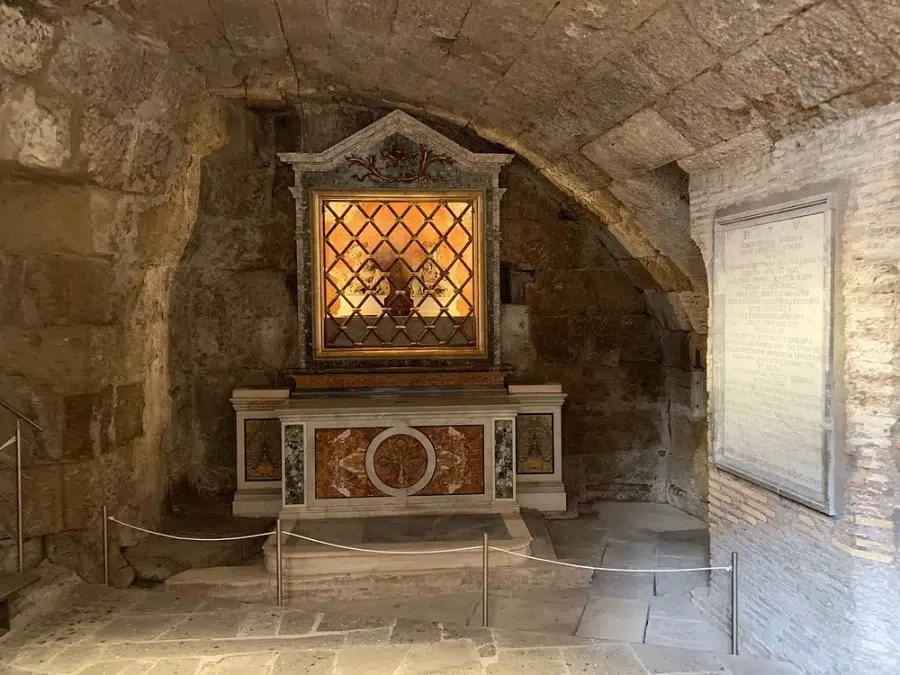
The Colosseum’s echoes of gladiatorial combat may still resonate in your ears, but a different kind of history awaits just beneath your feet. The Mamertine Prison near the Roman Forum is one of the city’s oldest and most infamous prisons. Dating back to the 7th century BC, it consists of two underground chambers carved out of volcanic rock.
The upper chamber, the Carcer, housed lesser criminals, while the Tullianum, a dark and dank dungeon, was reserved for high-profile prisoners awaiting execution. According to Christian tradition, notable figures such as Saints Peter and Paul were imprisoned here before their martyrdom. Visiting the Mamertine Prison is a unique experience beyond Rome’s tourist attractions.
Timings: Daily, 9 am to 5 pm
Last Entry: One hour before the site closes
Time Needed: 30 to 45 minutes
Best Time: Early Morning (April to June & September to October)
Location: Clivo Argentario, near the Colosseum Get Directions
Distance from Colosseum: 950 meters (15-minute walk)
Roman Forum
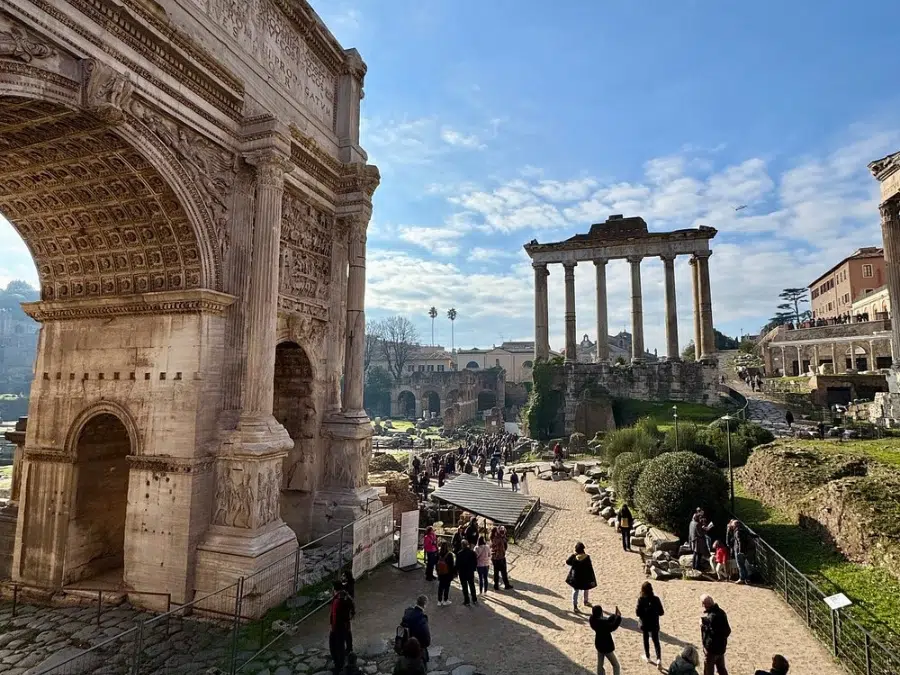
The Roman Forum is just a short walk from the Colosseum and it will take you around 2 minutes on foot to reach this ancient central hub. It was the epicenter of Roman public life and hosted elections, triumphal processions, public speeches, and criminal trials. The site was also a bustling marketplace where Romans gathered to buy and sell goods.
Today, the remains of temples, government buildings, and monuments tell the story of Rome’s rich history. It’s a must-see for anyone interested in ancient history and a perfect complement to a visit to the Colosseum.
Timings: Daily, 9 am to 7.15 pm
Last Entry: One hour before the site close
Time Needed: 1.5 to 2 hours
Best Time: Early Morning (April to June & September to October)
Location: Near the Capitoline Hill, Get Directions
Distance from Colosseum: 57 meters (1 minute walk)
Palatine Hill
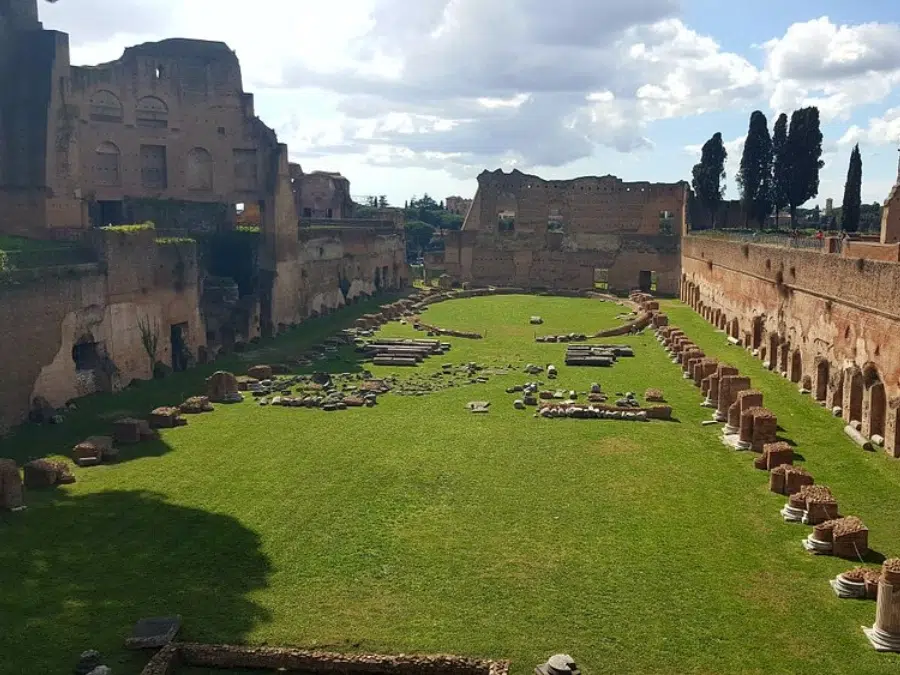
The Palatine Hill is one of the most ancient parts of Rome, and it’s just a 5-minute walk from the Colosseum. The two sites are very close to each other, making it convenient to visit both on the same day. Legend has it that Romulus founded Rome here in 753 BC. Roman emperors and aristocrats once lived in grand palaces surrounded by beautiful gardens and temples. Today, it is an archaeological site with impressive ruins that offer stunning views of the city and is a must-see for anyone fascinated by ancient civilizations and the story of Rome.
Timings: 8.30 am to 7 pm from April to August, 9 am to 4.30 pm from September to March
Last Entry: One hour before the site closes
Time Needed: 1 to 2 hours
Best Time: Sunset (April to June & September to October)
Location: Near the Roman Forum and the Circus Maximus Get Directions
Distance from Colosseum: 12 meters (1 minute walk)
The Arch of Constantine
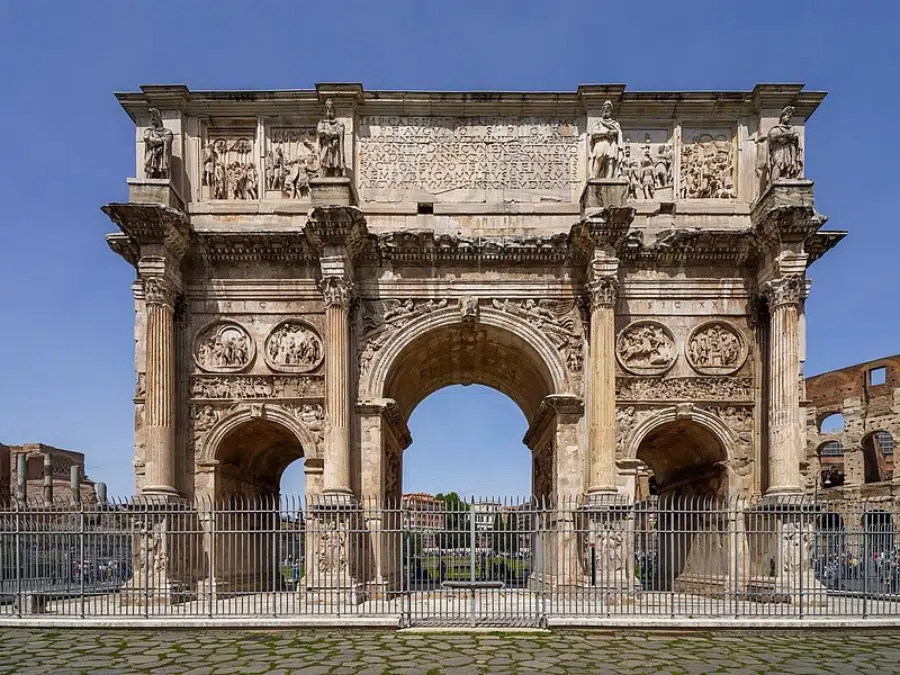
The Arch of Constantine is a triumphal arch built in AD 315 to commemorate Emperor Constantine’s victory over Maxentius at the Battle of Milvian Bridge. The true magic of this Arch lies in its sculptures. Each panel tells a story, so take your time examining them.
Look for scenes depicting the Battle of Milvian Bridge, where Constantine secured his victory. Notice the details of the soldiers’ armor, the expressions on their faces, and the chaos of the battlefield. Some panels on the arch were borrowed from older monuments dedicated to previous emperors. Can you spot the stylistic differences between these panels and those explicitly created for the Arch of Constantine?
Timings: Open 24 hours
Last Entry: Open 24 hours
Time Needed: 15 to 30 minutes
Best Time: Early Morning or Late Afternoon (April to June & September to October)
Location: Between the Colosseum and the Palatine Hill (Via Triumphalis) Get Directions
Distance from Colosseum: 140 meters (2-minute walk)
The Colle Oppio Ruins
The Colle Oppio is a sprawling archaeological site steeped in Roman history, consisting of ruins from various periods. Among its highlights are the Baths of Trajan, an expansive bathing complex built by Emperor Trajan in the early 2nd century AD. Beneath the surface of Colle Oppio lie the buried foundations of houses dating back to the Roman Republic era. Though not as grand as the imperial structures, these ruins offer a glimpse into ordinary Romans’ lives before emperors’ rise.
Timings: Daily, 7 am to 7 pm
Last Entry: One hour before the site closes
Time Needed: 30 minutes to 1 hour
Best Time: Early Morning (April to June)
Location: Oppian Hill in Rome Get Directions
Distance from Colosseum: 600 meters (8-minute walk)
Note: You can save time and money by purchasing a combo ticket for the Colosseum, Roman Forum, and Palatine Hill. This option lets you explore all three sites with just one ticket.
Explore Beyond Colosseum!
Go beyond ordinary experiences with our world-trusted partners.
Walk Through Roman Neighborhoods
While in Rome, don’t miss out on these two areas — Monti Neighborhood and Trajan’s Market. They blend historical charm, vibrant local life, and fascinating archaeological insights.
Explore the Monti Neighborhood
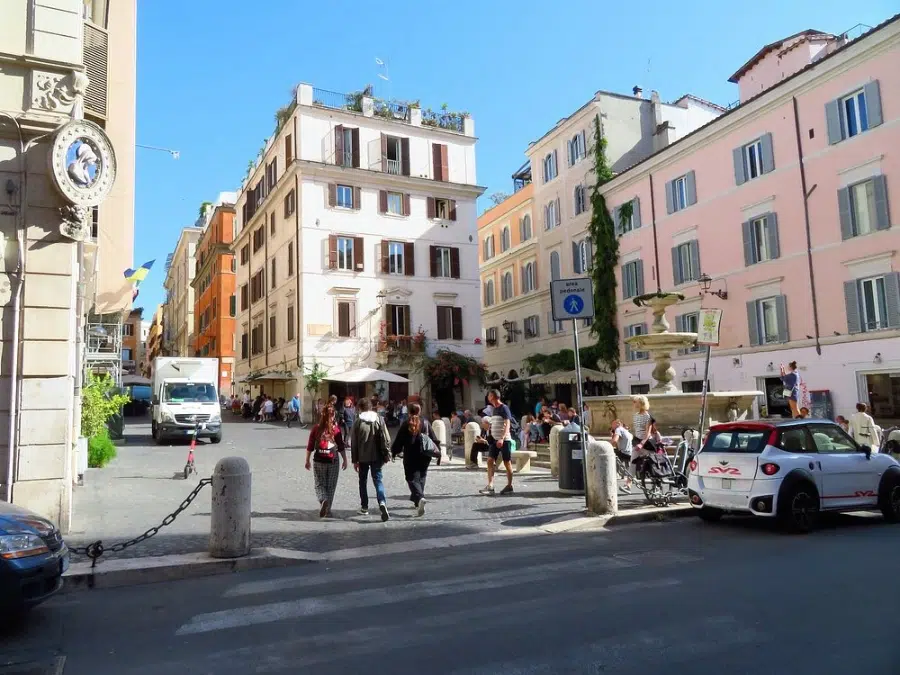
The Monti neighborhood was once a working-class area and even a red-light district during the Middle Ages. Today, Monti has transformed, emerging as a haven for artists, artisans, and trendsetters. As you stroll down its cobblestone streets, you will find vintage shops, art galleries, and cute cafes. You can join a walking tour to learn more about Monti’s history, discover hidden gems, and taste its authentic wines.
Timings: 10 am to 9 pm
Time Needed: 1 to 2 hours
Best Time: Late Afternoon (April to June & September to October)
Location: Roughly between the Colosseum and Piazza Venezia Get Directions
Distance from Colosseum: 700 meters (10-minute walk)
Visit the Trajan’s Market
The Trajan’s Market is an ancient shopping complex near the Colosseum that dates back to the early 2nd century AD. This impressive structure is considered the world’s first shopping mall, with over 150 shops and administrative offices. Today, you can explore its multi-level ruins to get a sense of daily commercial life in ancient Rome and admire the innovative architecture that has stood the test of time.
Timings: Daily, 9.30 am to 7.30 pm
Last Entry: One hour before the site closes
Time Needed: 1 to 1.5 hours
Best Time: Late Afternoon (April to June & September to October)
Location: Opposite end of the Colosseum Get Directions
Distance from Colosseum: 950 meters (13-minute walk)
Unique Things To Do Near Colosseum
After exploring the Colosseum, take your journey in Rome to the next level. Expand your knowledge with these essential insights to become a Roman expert.
Decode Ancient Graffiti
The Palatine Hill and Roman Forum are more than just archaeological sites. They are more like open-air museums filled with everyday scribblings by Romans of all backgrounds. These inscriptions, known as graffiti, offer a glimpse into the thoughts, feelings, and even humor of this bygone era.
What will you find?
- Love Notes: Yes, even Romans had crushes! You might find declarations of love and names scrawled together with hearts or playful insults aimed at a rival suitor.
- Satire and Jokes: Just like today, Romans loved a good laugh. Look for witty remarks poking fun at politicians, social norms, or even gladiators.
- Political Slogans: Want to know who was popular in ancient Rome? Graffiti can reveal support for specific candidates or criticisms of rival factions.
- Advertisements: These were known as ad murals in ancient Rome and were used to promote gladiatorial games, public events, or commercial services.
Timings: Daily, 9 am to 7.15 pm (Roman Forum), 8.30 am to 7 pm (Palatine Hill)
Last Entry: One hour before the site closes
Time Needed: 2 to 3 hours
Best Time: Early Morning or Late Afternoon (April to June & September to October)
Location: Palatine Hill & Roman Forum
Distance from Colosseum: 2 minutes walk (Roman Forum), 5 minutes walk (Palatine Hill)
Uncover the Myth of Nero’s Cruelty
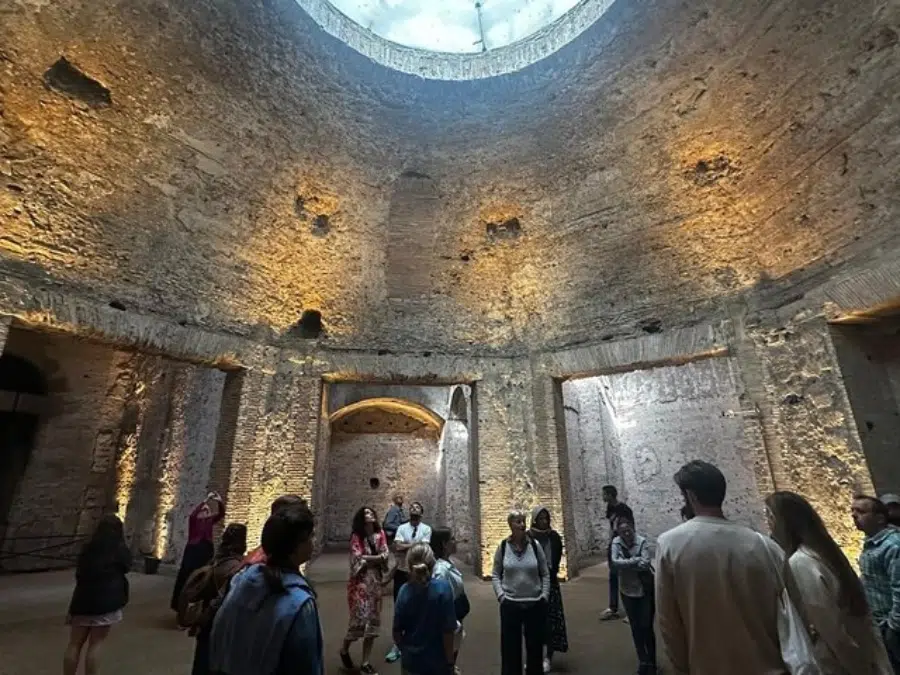
Nero Claudius Caesar Augustus Germanicus, Rome’s fifth emperor, is synonymous with cruelty and debauchery. The legend of Emperor Nero’s ‘Golden House,’ the Domus Aurea, is as captivating as controversial. This architectural marvel was built after the Great Fire of Rome in 64 AD. Contrary to popular belief, the stories of Nero playing the fiddle while Rome burned and persecuting Christians are likely exaggerated or politically motivated. You must separate fact from fiction as you learn about this architectural marvel and its place in Roman history.
What will you find?
- Innovative Architecture: Discover how Nero’s architects used pioneering techniques to create sprawling gardens, grand halls, and impressive domed ceilings.
- Underground Wonders: Descent into the network of tunnels and chambers once part of the magnificent palace.
- Ancient Frescoes: Admire the intricate frescoes and wall paintings that decorated the palace walls, displaying excellent artistic methods while depicting mythical scenes and landscapes.
Remember: Only a portion of the Domus Aurea has been excavated and is open to the public. We recommend guided tours to explore the site.
Timings: Friday to Sunday, 9 am to 5 pm
Last Entry: One hour before the site closes
Time Needed: 2 to 3 hours
Best Time: Late Afternoon (April to June & September to October)
Location: Parco del Colle Oppio Get Directions
Distance from Colosseum: 600 meters (8-minute walk)
Must-Have Experiences in Rome
Rome is a feast for the senses! Enjoy the mouthwatering sights, sounds, and customs of ancient Rome and let yourself feel like you are an Emperor of Rome.
Dine Like a Roman
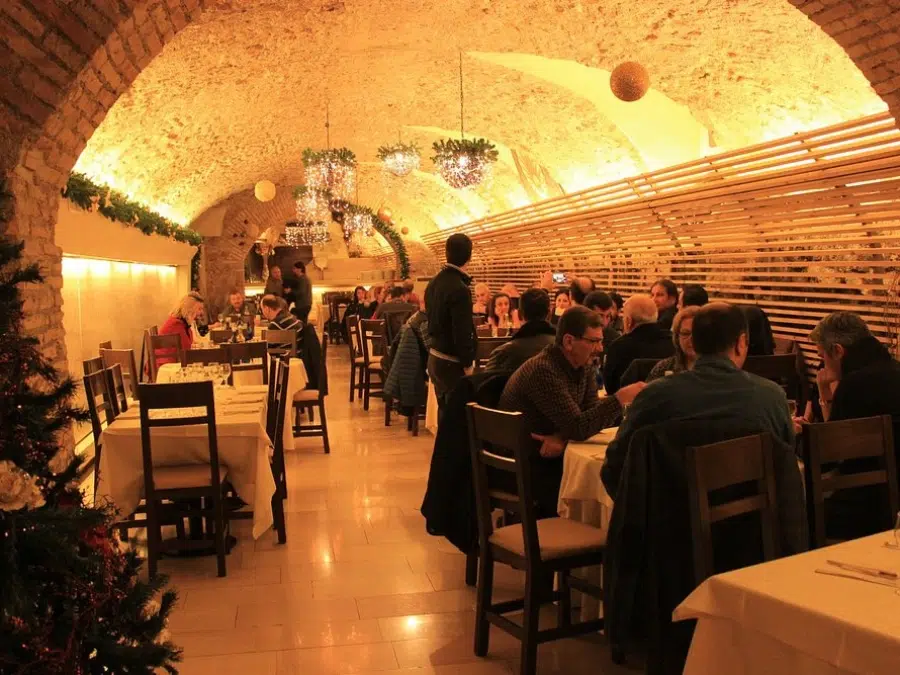
After a day of exploring ancient wonders, it’s time to tantalize your taste buds with a Roman feast! The Colosseum area offers a delightful smorgasbord of options, catering to every budget and palate.
You will find everything from budget-friendly trattorias serving classic pasta to Michelin-starred restaurants for a romantic evening. Don’t be afraid to explore international options or seek out hidden gems favored by locals. Pick your Favorite Restaurant Here!
Watch Sunset on the Palatine
Treat yourself to a tranquil and remarkable experience after spending the entire day exploring the ancient ruins of the city. As the sun sets below the horizon, head to Palatine Hill to witness the magical sunset amidst the historical backdrop. Enhance the moment by packing a picnic basket with light snacks and drinks to enjoy as you watch the sunset. Also, don’t forget to bring a blanket or shawl for extra comfort while sitting on the grass.
Learn to Make Gladiatorial Bread
Craving a taste of history? Travel back in time and learn the art of making gladiatorial bread, a staple diet of these fierce warriors! Several cooking schools and private chefs in Rome offer gladiatorial bread-making workshops.
Look for classes online or ask your hotel concierge for recommendations. These workshops will make you step into the shoes of a Roman chef and learn the secrets of preparing ‘panis quadratus,’ the square bread fed to gladiators. This bread provided essential energy for these warriors to train and fight.
FAQs
1. Is exploring the Colle Oppio ruins and Domus Aurea possible?
Yes, you can visit the Colle Oppio ruins, including the Baths of Trajan, and explore the Domus Aurea archaeological site, which offers insights into Emperor Nero’s palace. These sites are within walking distance from the Colosseum.
2. What are some lesser-known attractions near the Colosseum?
You can visit the Mamertine Prison, where Saints Peter and Paul were imprisoned, and the Arch of Constantine, a triumphal arch showcasing Roman victory.
3. What are some recommended activities?
After exploring, consider enjoying a sunset on Palatine Hill or taking a cooking workshop to learn about gladiatorial bread. These activities offer unique experiences to enhance your visit to Rome.
4. How can I best explore the Monti neighborhood near the Colosseum?
Take a leisurely stroll through the Monti neighborhood and visit vintage shops, art galleries, and cozy cafes. You can also consider joining a walking tour focusing on food and wine. These tours provide insights into Monti’s history and culinary delights.
Featured Image: Unsplash.com




